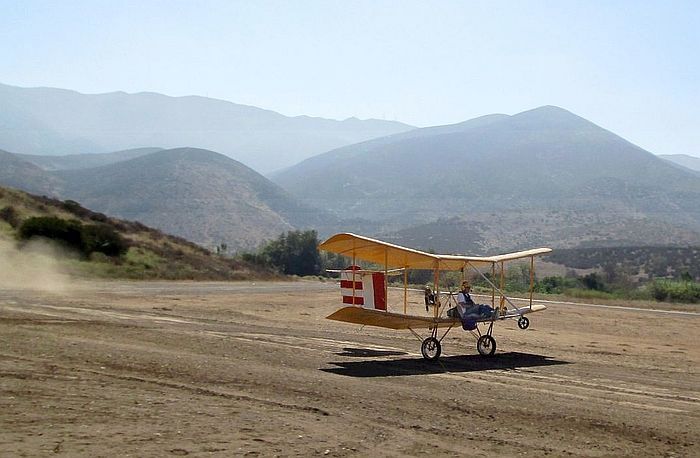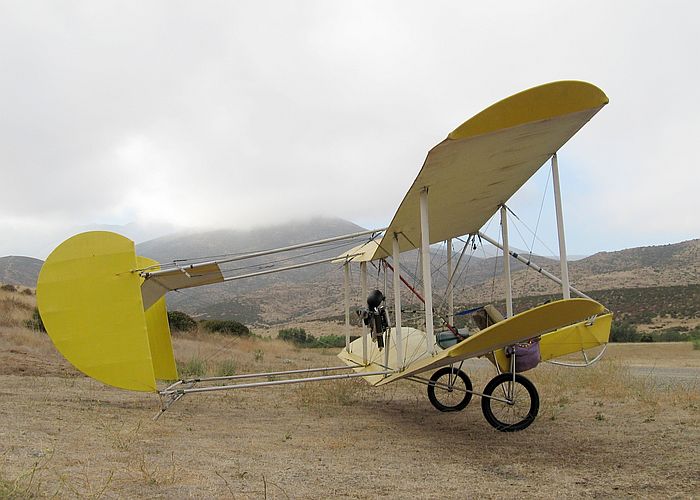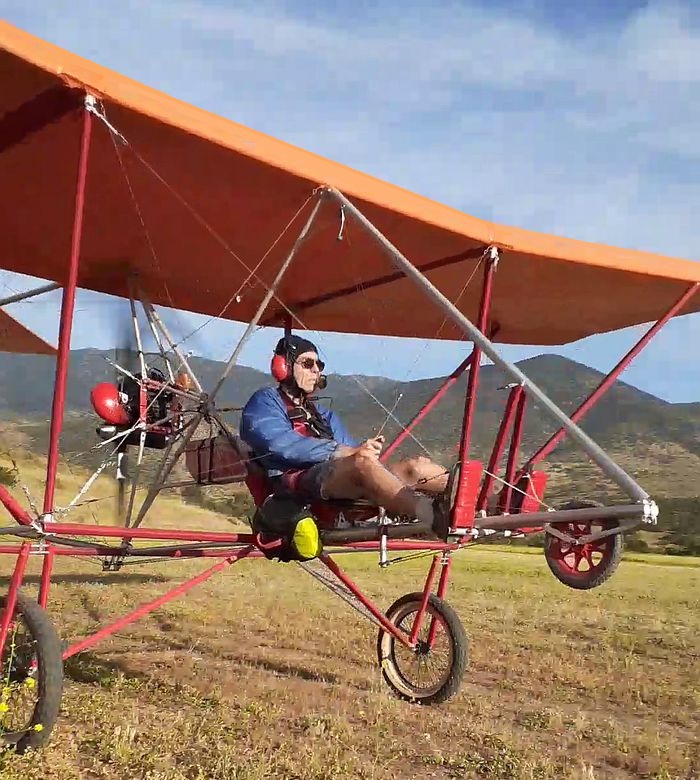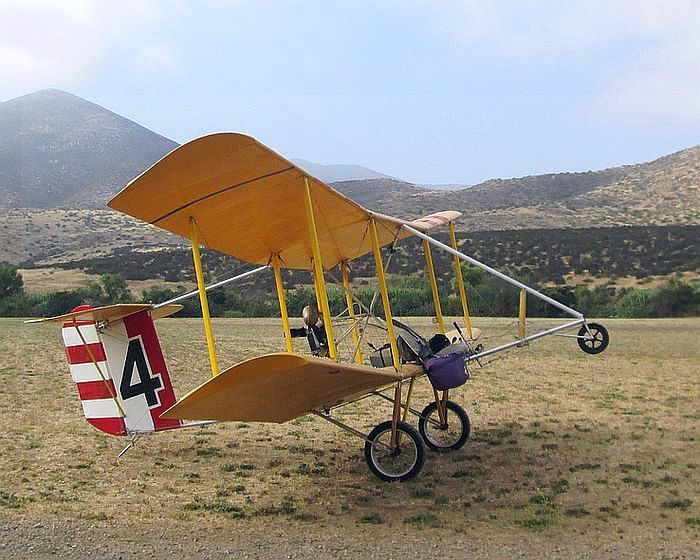|
Control cables are synthetic lines with marine
pulleys, the kind used in the running rigging of a sailboat (a
very similar application). End connections are made using a
series of half hitch knots to fasten the line onto a maillon
(steel quick link). The small size line I am using is stiffer
and stronger than the 1/16 inch braided steel cable which
might have been used otherwise. Synthetic sailboat lines used
to have a lot of creep (permanent lengthening after being
loaded in flight) but the modern mixed material lines don't do
that.
I build
and fly experimental prototypes to try out my ideas. Over
the years I have built a wide variety of rudder pedals,
looking for the stiffest, lightest, easiest to build and most
stylish setup. They were all okay, but the prismatic aluminum set was functionally the best.
I now favor parts that require minimal precision and don't
introduce any new materials or processes to the project, such
as those in the photo, except that my latest design doesn't
involve much bending of parts (see Bluebird photo). I avoid
high precision and exquisite craftsmanship in favor of
functional building.
I would rather "buy and fly", getting parts off the
shelf rather than making them, and I do that as much as
possible.
There are no flight instruments, no airspeed
indicator. There
is no fuel gage, a fuel check is just a look back at the
liquid level in the translucent fuel tank.
The panel instruments are for the engine: a tachometer and an
exhaust gas temperature gage. In a dozen years of flying I
don't think the panel instruments have ever actually been very
useful, they are mainly for peace of mind and ground
diagnostics.
The
elevator control stick is braced against side motion, to
resist the wishful thinking of pilots who miss their
ailerons. When I was first flying a two axis plane I had
some moments of "wing bank brain lock", sudden anxiety in
response to a lack of direct roll control. I had to pause
and repeat the mantra "steer with your feet" so I could
get on course and stop pushing sideways on the stick.
Early
on I flew a lot without a pitch trim, and often found
myself flying fast because I was nose heavy. Eventually I
added a bungee trim, and then also a trim tab
on the elevator.
The elastic nose skid shown here works well, it's the same as
the tail skid but used up front. Eventually, it turned out to
be easier to make a nose skid from a small bicycle wheel. The
nose wheel as opposed to the nose skid might also give pilots
more confidence that it is okay to roll on the main wheels
with the nose level or low, which is good procedure.
When
the red plastic cover of the run switch is down, as shown,
the switch is "off" and the engine will not run. This is
actually a grounding switch that prevents the spark plug
from firing when the engine is supposed to be off. To
enable the engine to
start and run the red
cover is flipped up and the toggle under it is switched
upward.
|











